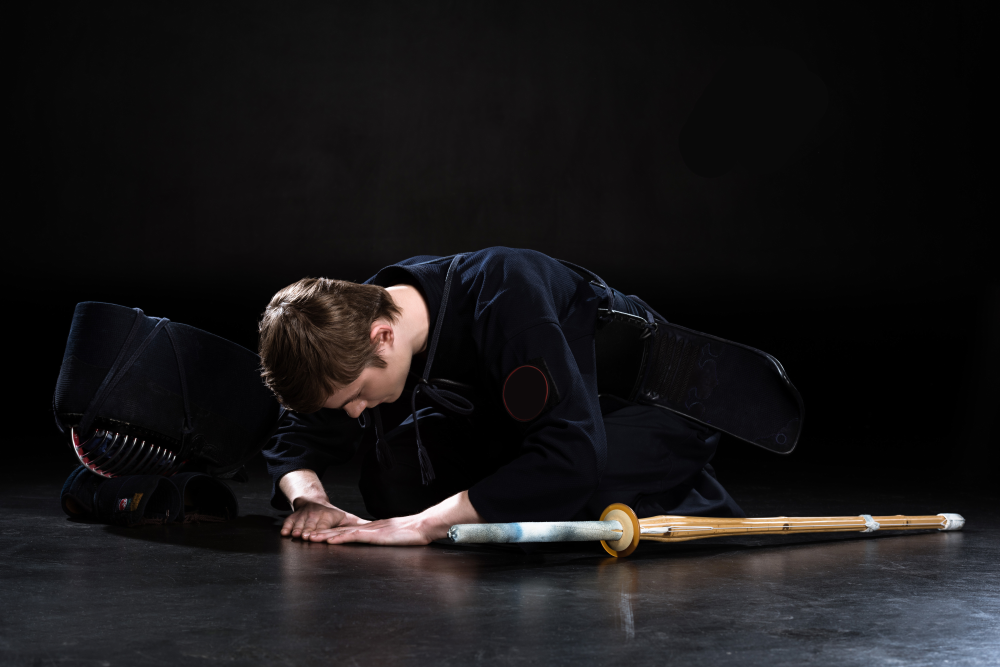Group Harmony vs. Individual Competition: Japan’s Cultural Balance

If you are familiar with Japan and someone asks if Japanese society is individualistic or collective, the immediate answer would be “yes.” And you would not be far from the truth. Yes, Japanese society is known for its high importance on harmony, where individuals prioritize the collective good over personal ambition.
This emphasis on group harmony in Japanese culture, known as “wa (和),” touches every aspect of life—from schools and workplaces to families and communities.
For a society whose one of the most important foundations is harmony, doesn’t it sound contradictory to have an equally strong competitive spirit?
Aren’t the Japanese Equally Competitive?
Let’s take some examples:
Sports
Japan ranks quite high for its sports competitiveness. The country has consistently produced world-class athletes who compete at the highest level in the Olympic Games.
Japanese athletes, from gymnastics to judo, are known for their dedication, training, and competitive spirit.
Moreover, the competitiveness on the world stage only comes after being competitive with each other inside the nation.
Apart from team competitions, individual competitions, such as martial arts (judo, karate, kendo) and sumo, are deeply rooted in Japanese culture. These emphasize continuous self-improvement and individual competition.
Entrance Exams
In Japan, entrance exams for high schools and universities are notoriously competitive.
In fact, the Japanese use the term “shaken Jigoku,” meaning “exam hell,” to describe these entrance exams.
This term captures students’ intensity and pressure to prepare for these tests. For many students, years of preparation are devoted to passing these exams for future career paths and social standing.
Technology and Innovation
Japan’s relentless pursuit of excellence in technology and innovation is another example of its competitive spirit. Companies like Toyota, Sony, and Panasonic have long been at the forefront of global competition.
Competition at Workplaces
Japanese work culture is known for its emphasis on teamwork and team achievements rather than individual accomplishments. However, there is always a subtle but strong undercurrent of competition. Individuals work hard and long for perfectionism.
Balancing the Cultural Harmony and Competitiveness
One of the most interesting aspects of Japanese culture is the delicate and carefully instilled balance between harmony and competition.
In a society that values collectivism, competition is not discarded; rather, it is carefully infused into the social life to maintain order and mutual respect. This balancing act starts at a young age, with schools and parents playing a crucial role in instilling these qualities in children.
In Japan’s education system, students learn to work as part of a group, developing social skills that emphasize empathy, teamwork, and collective responsibility.
At the same time, they face intense academic competition, particularly through high-stakes entrance exams. Parents, too, walk a fine line, encouraging their children to excel while reinforcing the importance of fitting into the group and respecting others.
The Bushido code, or the way of the warrior, is another historical influence on Japan’s distinctive approach to competition and harmony.
Bushido emphasizes loyalty, honor, and self-sacrifice, which aligns with the cultural emphasis on group harmony. At the same time, the martial aspects of Bushido support the value of personal excellence and competition, particularly in the context of martial arts and self-discipline.
We cannot say that this blend of harmony and competition is unique to Japan alone. However, the extent of this mix of extreme importance to group harmony and competitiveness is rather unique to this country.
How is it Achieved?
It may seem easy, but instilling and maintaining a balance of these contradictory traits is not easy. It’s one of those things that needs a combination of science and art perfected in such a way that it happens without thinking.
Let’s take a dive deeper to discuss this further:
Integration in Education
Early Education:
In the early years of schooling, the focus is heavily on socialization and group activities to encourage cooperation and empathy.
Children are taught to work together, share, and help each other. In those early years, competitiveness is downplayed to ensure that all children feel included and valued.
Gradual Introduction of Competition:
As students progress through the educational system, competition becomes more prominent, especially in sports clubs, exams, and inter-school competitions.
However, the competitive spirit is encouraged in a way that encourages youngsters to still respect the value of harmony. They are taught not just to celebrate success but equally to respect the efforts, perseverance, and ability to work with others.
Managed Competition:
While harmony is emphasized, competition is not eliminated; instead, it is carefully managed and contextualized.
For example, in sports and academic pursuits, competition is seen as a way to push individuals and groups to excel, but always with respect and modesty. The competition is seen as a collective effort; the group’s success is more important than individual achievements.
Cultural Norms:
Even in competitive settings, cultural norms around humility and modesty play a significant role. Students are encouraged to strive for excellence but are also taught to be humble in victory and gracious in defeat, which helps maintain harmony.
Objective-Driven Behavior and Flexibility
Contextual Prioritization:
The emphasis is given not just to the action but the objective and context. Children can learn to adapt their behavior to suit the context by emphasizing the context in each situation. This context-oriented thinking develops the ability to think and act differently in different situations. If the goal is collective—such as completing a group project or participating in a team sport—then harmony and cooperation are most important. On the other hand, if the goal is individual—such as performing well on an exam then a competitive mindset is more appropriate.
Understanding a situation’s context and broader objectives helps children develop situational awareness. This awareness allows them to gauge when to prioritize group harmony and when to assert themselves and compete.
Moral and Ethical Framework:
Even in competitive situations, Japanese society’s ethical framework, with its extremely high values of respect for others, humility, and fairness, remains the most important. By teaching children to always consider the broader impact of their actions on others, they can pursue individual goals without sacrificing collective well-being.
Developing Empathy and Perspective:
Understanding Others’ Goals:
Focusing on objectives encourages empathy and perspective-taking. By considering both their own goals and those of others, individuals can better navigate social dynamics, finding ways to achieve personal success without compromising the collective good.
Balancing Individual and Collective Success:
Ultimately, this approach helps individuals learn that personal success and collective success are not mutually exclusive. In many cases, the two can be aligned, with individual achievements contributing to the group’s overall success and vice versa.
Developing Tatemae and Honne Characteristics
The concepts of tatemae (public behavior) and honor (private feelings) are integral to Japanese culture.
To many foreigners, this concept may sound like a sign of dishonesty. However, “Tatemae and Honne” concept is all about maintaining a good balance between social harmony and personal desires.
In public, individuals are expected to conform to societal expectations and avoid causing conflict, even if it means suppressing their true feelings or desires.
This concept allows for the coexistence of harmony and competition by creating a space where competitive instincts remain private and do not affect public harmony.
Long-Term Development
This flexibility of balancing competitive spirit with equal balance to group harmony becomes crucial in Japan’s workplace and other adult settings.
Professionals who can navigate both collaborative and competitive environments tend to be more successful. They can adapt to the demands of different situations while maintaining good relationships with colleagues.
Final Takeaways
In summary, teaching children to prioritize the objective in each situation allows for a harmonious integration of competition and cooperation.
This approach promotes flexibility, adaptability, and a deeper understanding of effectively understanding different social contexts. It helps children learn that both harmony and competition are valuable, depending on the situation. It teaches that these two concepts do not have to be contradictory, but can be complementary. And by balancing these traits, they can contribute to their growth as well as to society and the nation.


A long-term ex-pat in Japan, Himanshu comes with an IT background in SAP consulting, IT Business Development, and then running the country operations of an IT consulting multinational. Himanshu is the co-founder and Managing Director of ReachExt K.K. and EJable.com. He is also an Advisory Board Member of a Silicon Valley AI/IoT startup.
